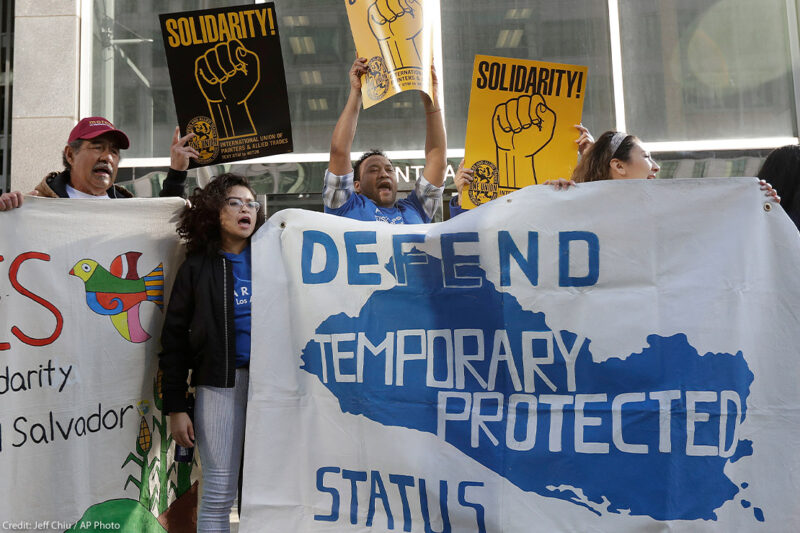Hundreds of Thousands of People in Limbo as They Wait for Justice


Every day, nearly 400,000 people in America with Temporary Protected Status (TPS) wake up wondering whether today will bring news of a court ruling that could effectively end their immigration status and put them at risk for deportation. Perhaps worse is the impact the decision could have on their U.S. citizen children. Thousands of young Americans could face an impossible choice: leave the U.S. to stay with their parents or lose their parents if they choose to stay in the only country they’ve ever known. They can’t have both, at least if the Trump administration has its way.
The court case on which the fate of these thousands of people rests is Ramos v. Nielsen, in which the ACLU, the National Day Laborer Organizing Network, and Sidley Austin LLP argue that the Trump administration broke the law when it attempted to strip people with TPS of the lawful immigration status they have held in this country for years — often for decades. After a district court ruled in favor of those with TPS, the Trump administration filed an appeal that has now been pending for nearly two years.
Congress created TPS 30 years ago to allow people to stay in America when they cannot return safely to their country of origin. Since its adoption, every administration before this one has invoked it to give humanitarian protection to people when natural disaster, war, or other political, economic, or environmental instability rendered their countries unsafe. When Trump came into office, his administration inherited TPS designations that had granted protection to nearly 400,000 people from 10 countries: El Salvador, Haiti, Honduras, Nepal, Nicaragua, Somalia, South Sudan, Sudan, Syria, and Yemen.
But the Trump administration had different plans for TPS. Individuals from anti-immigrant, white supremacist organizations, which had long targeted this program, came to work at the White House after Trump took office and quickly implemented their agenda. By January 2018, the administration had terminated TPS for 98 percent of the people who held that status when he came into office — all those from El Salvador, Haiti, Honduras, Nepal, Nicaragua, and Sudan. The administration also failed to re-designate TPS for Somalia, South Sudan, Syria, and Yemen, thus denying protection to thousands of people already here, simply because they arrived after Trump came to power.
Fortunately, the courts so far have risen to the challenge of protecting people with TPS from the Trump administration’s cruelty. We filed the Ramos lawsuit in 2018 on behalf of those with TPS from El Salvador, Haiti, Nicaragua, and Sudan on the basis that the administration (1) acted out of racial animus against non-white, non-European immigrants and (2) used a new and extremely narrow interpretation of TPS without adequate justification, thereby violating the Administrative Procedures Act. A few months later, we filed a parallel lawsuit to protect people with TPS from Honduras and Nepal. The lower courts’ decisions on this issue have uniformly agreed that the administration’s TPS decisions violated federal law, issuing decisions that protect the 400,000 people with TPS and their families, for now.
But a decision from the court of appeals is due any day now. An appellate ruling in the government’s favor could leave people with TPS at risk of losing their status once again.
However, an adverse decision would not necessarily mean the end of the road, as we could ask the Supreme Court to intervene. Even if the Supreme Court declines that request, the administration would be required to continue TPS for at least six months, during which the 400,000 TPS holders would continue to maintain their right to live and work here.
That six-month period turns out to be awfully important — we are writing this in August 2020. Six months from now takes us into January 2021. By then, a new administration might be evaluating TPS determinations, perhaps applying the TPS statute as it was intended. There might also be a Congress interested in enacting legislation that puts TPS holders on a pathway to citizenship, such as the American Dream and Promise Act (H.R. 6), which would also help Dreamers and those with Deferred Enforced Departure.
That window of time brings a bit of hope — for the 400,000 people who hold TPS status, for the hundreds of thousands of children in their homes, and for so many other immigrant communities. And for us, as we wait with them — continuing our struggle for justice.


